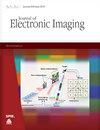图像聚类的双层深度多视角协作学习
IF 1
4区 计算机科学
Q4 ENGINEERING, ELECTRICAL & ELECTRONIC
引用次数: 0
摘要
多视图聚类能够从多个视图中探索共享信息,因此备受关注。多视图聚类的应用包括图像和视频分析、生物信息学和社交网络分析,在这些应用中,整合不同的数据源可以增强对数据的理解和洞察力。然而,现有的多视图模型存在以下局限性:(1) 使用编码器直接从原始数据中提取潜在表征容易受到噪声和其他因素的干扰;(2) 不同视图之间的互补信息往往被忽视,导致每个视图中关键的独特信息丢失。因此,我们提出了一种独特的双层深度多视图协作学习方法。我们的方法通过多层感知器进一步处理编码器学习到的潜在表征,从而获得更丰富的语义信息。此外,我们还在特征层和标签层引入了双路径引导,以促进不同视图间互补信息的学习。此外,我们还引入了预聚类方法,通过伪标签引导不同视图之间的相互学习。在四个图像数据集(Caltech-5V、STL10、Cifar10、Cifar100)上的实验结果表明,我们的方法达到了最先进的聚类性能,并使用标准指标进行了评估,包括准确率、归一化互信息和纯度。我们将所提出的方法与现有的聚类算法进行了比较,以验证其有效性。本文章由计算机程序翻译,如有差异,请以英文原文为准。
Double-level deep multi-view collaborative learning for image clustering
Multi-view clustering has garnered significant attention due to its ability to explore shared information from multiple views. Applications of multi-view clustering include image and video analysis, bioinformatics, and social network analysis, in which integrating diverse data sources enhances data understanding and insights. However, existing multi-view models suffer from the following limitations: (1) directly extracting latent representations from raw data using encoders is susceptible to interference from noise and other factors and (2) complementary information among different views is often overlooked, resulting in the loss of crucial unique information from each view. Therefore, we propose a distinctive double-level deep multi-view collaborative learning approach. Our method further processes the latent representations learned by the encoder through multiple layers of perceptrons to obtain richer semantic information. In addition, we introduce dual-path guidance at both the feature and label levels to facilitate the learning of complementary information across different views. Furthermore, we introduce pre-clustering methods to guide mutual learning among different views through pseudo-labels. Experimental results on four image datasets (Caltech-5V, STL10, Cifar10, Cifar100) demonstrate that our method achieves state-of-the-art clustering performance, evaluated using standard metrics, including accuracy, normalized mutual information, and purity. We compare our proposed method with existing clustering algorithms to validate its effectiveness.
求助全文
通过发布文献求助,成功后即可免费获取论文全文。
去求助
来源期刊

Journal of Electronic Imaging
工程技术-成像科学与照相技术
CiteScore
1.70
自引率
27.30%
发文量
341
审稿时长
4.0 months
期刊介绍:
The Journal of Electronic Imaging publishes peer-reviewed papers in all technology areas that make up the field of electronic imaging and are normally considered in the design, engineering, and applications of electronic imaging systems.
 求助内容:
求助内容: 应助结果提醒方式:
应助结果提醒方式:


